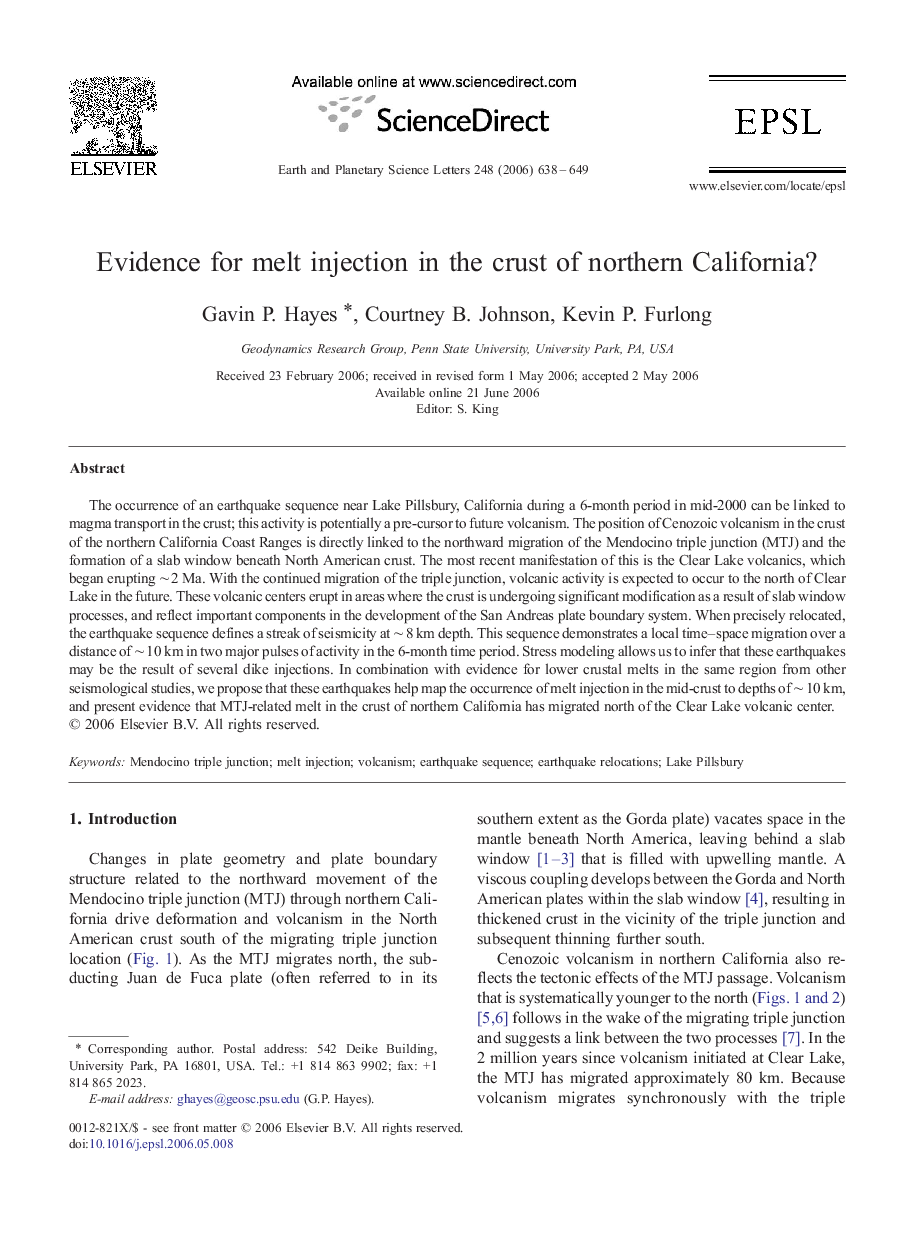| Article ID | Journal | Published Year | Pages | File Type |
|---|---|---|---|---|
| 4680720 | Earth and Planetary Science Letters | 2006 | 12 Pages |
The occurrence of an earthquake sequence near Lake Pillsbury, California during a 6-month period in mid-2000 can be linked to magma transport in the crust; this activity is potentially a pre-cursor to future volcanism. The position of Cenozoic volcanism in the crust of the northern California Coast Ranges is directly linked to the northward migration of the Mendocino triple junction (MTJ) and the formation of a slab window beneath North American crust. The most recent manifestation of this is the Clear Lake volcanics, which began erupting ∼ 2 Ma. With the continued migration of the triple junction, volcanic activity is expected to occur to the north of Clear Lake in the future. These volcanic centers erupt in areas where the crust is undergoing significant modification as a result of slab window processes, and reflect important components in the development of the San Andreas plate boundary system. When precisely relocated, the earthquake sequence defines a streak of seismicity at ∼ 8 km depth. This sequence demonstrates a local time–space migration over a distance of ∼ 10 km in two major pulses of activity in the 6-month time period. Stress modeling allows us to infer that these earthquakes may be the result of several dike injections. In combination with evidence for lower crustal melts in the same region from other seismological studies, we propose that these earthquakes help map the occurrence of melt injection in the mid-crust to depths of ∼ 10 km, and present evidence that MTJ-related melt in the crust of northern California has migrated north of the Clear Lake volcanic center.
